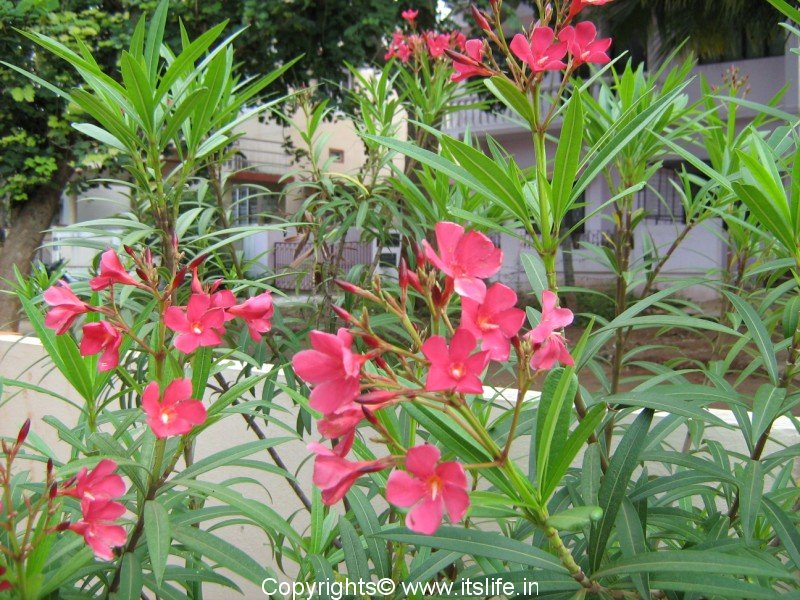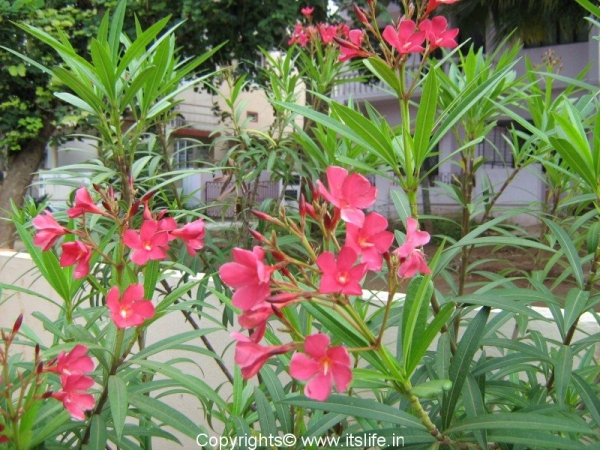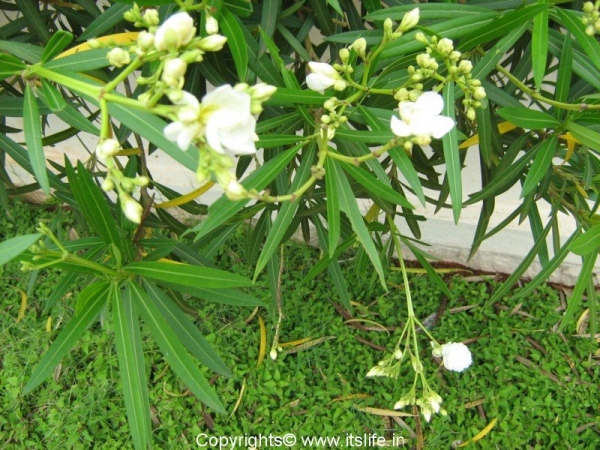I am really amazed about my childhood memories revolving around plants and trees! I remember plucking two leaves of Kanagale and putting them together and pulling it in and out, which would make a “put-put” sound when they hit each other! Did any of you try doing this?
Plant Summary:
Botanical name of Kanagale (Kannada) is Nerium Oleander and belongs to family Apocynaceae. Oleander is an evergreen shrub which grows to 18 – 20 feet in height. The young branches are green and as they mature, the bark turns grey.
The leaves are thick, dark-green, narrow and in pairs. They are 2 to 8 inches long and 1 to 2 cm broad. The leaf is offered to Lord Ganesha during 21 patra (leaves) pooja while chanting “Om Vikataaya namaha, Karaveera Patram Samarpayaami”.
The scented flowers bloom in clusters at the end of each branch. The flowers are white, red, yellow, and pink. They have a 5-lobed fringed corolla around the central corolla tube. There are double layered petal flowers. The flowers are also offered to god either separately or in the form of a garland.
Oleander flower is offered to Lord Ganesha during the 21 Pushpa Pooja while chanting the below mantra: “Om Devaaneekarchithaya Namaha Karaveera Pushpam samarpayami”.
The fruit is a long capsule containing seeds.
All parts of the plant are poisonous and hence none of the stray mammals like sheep, horses, and cattle feed on it. This is the reason you will find many of these plants planted outside the compound wall. But caterpillars, moth, and butterfly feed on Oleander plant.
Oleander is planted as an ornamental plant. A dwarf variety is very popular among gardeners as they grow to a height of 3 – 4 feet and start to bloom quickly. In India the flowers are used to make garlands and are offered to Gods.
Historically, Nerium Oleander has been reported in ancient texts and folklore for more than 1500 years.
Traditional medicine use parts of Oleander to treat ailments.
Propagation:
The plant is propagated through cuttings.




